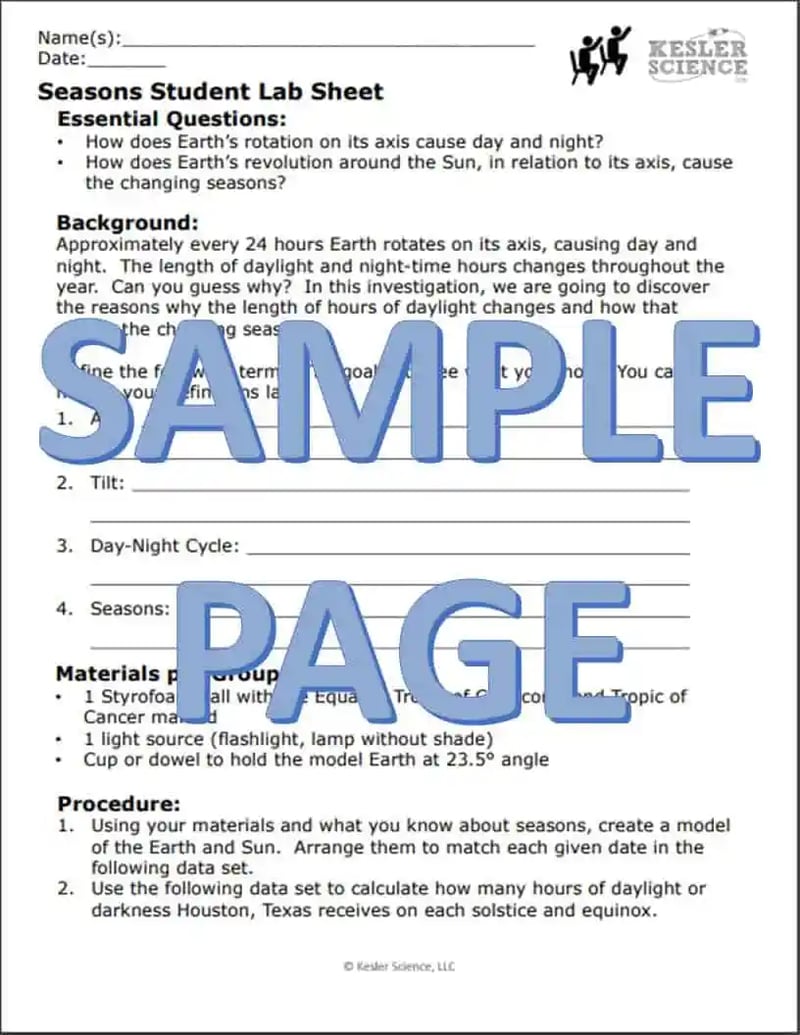Seasons and Daylight Inquiry Lab
Middle School Inquiry Lab on Seasons and Daylight
In this lab students will use data to demonstrate how Earth’s rotation causes day and night. Students will also use data to show how Earth revolves around the Sun, causing changes in the seasons.
Each inquiry lab will contain an essential question that will drive the lesson and make students think. For this lesson, the essential question is:
- How does Earth’s rotation on its axis cause day and night? How does Earth’s revolution around the Sun, in relation to its axis, cause the changing seasons?
BACKGROUND INFORMATION AND MATERIALS LIST:
Students will begin the lab by reading the essential question and background information. This can be done individually, as lab groups, or as a whole class. If you consider lab groups, you also might include some type of whole class formative checks before digging into the lab.

Materials List:
- 1 Styrofoam ball with the Equator, Tropic of Capricorn, and Tropic of Cancer marked
- 1 light source (flashlight, lamp without a shade)
- cup or dowel to hold the model Earth at 23.5° angle

PROCEDURE:
For this lab, students will create a model of the Earth set at its axis. Using a Styrofoam ball, cup, and a flashlight, students will match their model with a set of informational data given. Students will diagram their placement of their model and will have to calculate the hours of daylight and darkness during that particular placement.
Students will do this three more times, each with different sets of data. When students have completed their diagrams and calculations, students will create a double line graph showing the amount of daylight and darkness throughout the year.
CONCLUSION
Students will go back to the essential question and write a CER (Claim, Evidence, Reasoning) to conclude the lab. Once completed, students will reflect back on their learning by answering the following questions:
- Mercury has an axial tilt of 0°. Based on what you know, do you think Mercury has seasons? Explain your reasoning.
- What conclusions can you make about the length of day and seasons on Mars? How are they similar or different to those of Earth?
MODIFIED AND INDEPENDENT INQUIRY VERSIONS
All of the Kesler Science inquiry labs come with three different modification levels. Each lab is differentiated using the icons below.
STANDARDS ALIGNMENT
TEKS: 8.7A – Model and illustrate how the tilted Earth rotates on its axis, causing day and night, and revolves around the Sun, causing changes in seasons.

Download Over $100 in FREE Resources
For Middle School Science
Simply create a login below and gain immediate access to a selection of our Kesler Science product line worth $100 - for FREE. There's a full version of every product type! You'll also join tens of thousands of middle school science teachers who receive timely tips and strategies straight to their inbox.





